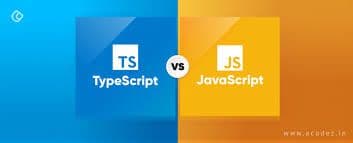
Introduction to TypeScript: A Better JavaScript
July 20, 2024
Qasim Parekh
TypeScript offers a robust solution to the challenges of developing large and complex JavaScript applications. By introducing static types and other advanced features, TypeScript enhances code quality, maintainability, and developer productivity. Whether you’re starting a new project or integrating it into an existing codebase, TypeScript provides a smooth and incremental path to adopting a better way of writing JavaScript. Embrace TypeScript and experience the benefits of a more reliable and scalable development process.
Javascript
Typescript
JavaScript is the backbone of modern web development, powering everything from simple interactive websites to complex web applications. However, as applications grow in size and complexity, managing JavaScript code can become challenging. This is where TypeScript comes into play. Created by Microsoft, TypeScript is a superset of JavaScript that introduces static typing and other features to enhance development productivity and code quality. This blog provides an introduction to TypeScript, exploring its benefits and how it offers a better development experience compared to vanilla JavaScript.
What is TypeScript?
TypeScript is an open-source programming language developed and maintained by Microsoft. It builds on JavaScript by adding static types, which help developers catch errors early during development rather than at runtime. TypeScript code is transpiled into plain JavaScript, ensuring compatibility with any environment that supports JavaScript.
Key Features of TypeScript
Static Typing: TypeScript’s most prominent feature is its type system. By explicitly declaring types for variables, function parameters, and return values, developers can catch type-related errors at compile time, leading to more robust code.
Type Inference: While TypeScript supports explicit type annotations, it also includes type inference. This means TypeScript can often automatically determine the type of a variable based on its initial value, reducing the need for redundant type declarations.
Modern JavaScript Features: TypeScript supports all the latest ECMAScript features, including those from ES6 and beyond. This ensures developers can use cutting-edge JavaScript features without compatibility concerns.
Interfaces and Generics: TypeScript provides powerful tools for defining complex types and ensuring type safety. Interfaces allow developers to define the shape of objects, while generics enable the creation of reusable and type-safe components.
Enhanced IDE Support: TypeScript's static type system enables better code completion, refactoring, and navigation in IDEs like Visual Studio Code. This improves developer productivity and code quality.
Compatibility: TypeScript can gradually be adopted into existing JavaScript projects. Developers can start using TypeScript by renaming JavaScript files with a .ts extension and incrementally adding type annotations.
Why Use TypeScript?
Improved Code Quality: By catching errors at compile time, TypeScript reduces the likelihood of runtime errors, leading to more reliable applications.
Better Documentation: Type annotations serve as built-in documentation, making it easier for developers to understand the codebase and collaborate effectively.
Enhanced Refactoring: With static typing, refactoring large codebases becomes safer and more manageable. Developers can confidently rename variables, change function signatures, and move code around without fear of introducing errors.
Scalability: TypeScript is particularly beneficial for large-scale applications, where maintaining and understanding complex codebases can be challenging. Its type system and additional features help manage complexity and improve maintainability.
Getting Started with TypeScript
To get started with TypeScript, you need to install it via npm (Node Package Manager):
npm install -g typescript
Once installed, you can create a TypeScript file with a .ts extension and start writing code. Here’s a simple example:
function greet(name: string): string { return`Hello, ${name}!`; }
letuser: string = "World";
console.log(greet(user));
In this example, the greet function takes a name parameter of type string and returns a string. The user variable is also declared as a string, ensuring type consistency.
To compile the TypeScript file into JavaScript, use the following command:
tsc filename.ts
This generates a plain JavaScript file that can be executed in any JavaScript environment.